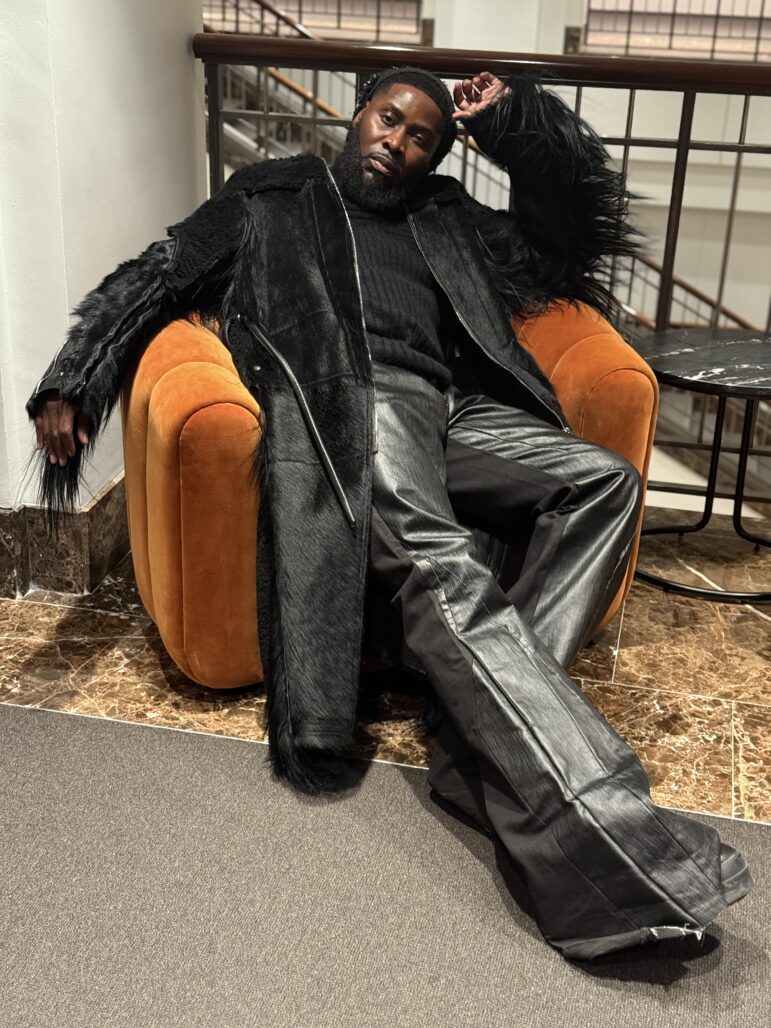At the tender age of 4, Saiquana Gilchrist’s son is far more of an artist and museum-goer than she was as a youngster. Through Josiah’s enrollment at Georgia L. McMurray Day Care in East New York, mother and son qualify for a special pass that gives them entree to a dazzling array of the city’s arts and culture institutions, and copious family-oriented programs and workshops – all for free.
“I wish they had it when I was little,” Gilchrist, 24, said at a recent culture fair for parents and educators held by Cool Culture, the Brooklyn nonprofit that now provides its Family Pass to nearly 50,000 New York City families. The pair attended a painting course in Manhattan, and now they both dabble in painting. “He loves museums,” Gilchrist said of Josiah. They attended the “Bodies” exhibit on human anatomy at South Street Seaport – and “he still remembers it, and that was two years ago.”
From awe-inspiring powerhouses like the Metropolitan Museum of Art and the American Museum of Natural History, to smaller-scale gems like the Noguchi Museum and the Morris-Jumel Mansion, to lesser-known locales including the Weeksville Heritage Center and the Snug Harbor Botanical Garden, Cool Culture’s programming swings the doors open wide. The group does that not only by making the sites free, but by providing the orientation, interpretation, tours and related educational projects that lower other barriers – such as the “intimidation factor” – for families who may never have visited a museum before.
Founded by two Head Start teachers a decade ago, Cool Culture reaches preschool-age children (and their parents and siblings – a Family Pass admits five people into the participating institutions) by partnering with hundreds of subsidized child care, pre-kindergarten and Head Start programs for families with incomes up to twice the federal poverty standard. The goal is not just to expose children to the riches of the city’s museums, but to provide a potent form of early childhood education – showing parents how to be better teachers along the way.
“It’s an opportunity to have discussions about what kids think, see and feel,” says Cool Culture executive director Candice Anderson, “and just to enjoy beauty.” The activities form “habits of mind that will continue.”
In fact, she just recently bumped into a 14-year-old from the first cohort of Cool Culture participants at the Morris-Jumel Mansion in upper Manhattan: He was volunteering there.
“For the museums, it’s really a long-term investment in their audiences,” Anderson said.
At the Noguchi Museum, founded by Japanese-American sculptor Isamu Noguchi to house his work, education head Heather Brady said children take to the collection immediately. Although the adult eye may find the works in the small museum in Long Island City, Queens, abstract and therefore challenging, “the young ones are very comfortable the moment they step in, because they’re surrounded by shape, color and texture.” Visits from Family Pass holders have increased over the past several years, Brady said, diversifying the museum’s audience and bringing in more families “who live in our backyard.”
In New York City’s arts and culture scene, arts educators said Cool Culture stands alone in its approach to increasing the accessibility of cultural institutions. (One example of the standard fees is at the Guggenheim Museum, where entrance costs $18 per adult, $15 per student, and kids under 12 are free.) For older kids, High 5 makes live theater performances affordable, offering $5 tickets.
At the Center for Arts Education, which advocates for better arts instruction in the public schools, director of public engagement Kira Streets said that at a time when the city’s schools are not meeting state requirements for arts education, the work of groups like Cool Culture takes on heightened importance. “In general, we do know that a lot of what students are getting is because of partnerships like this,” Streets said.
Even as the recession is causing cutbacks and closures of arts organizations nationwide, Cool Culture’s Anderson sounds confident about her group’s ability to continue its work. Its annual budget of around $600,000 comes from government funding, individual and corporate donations, foundation grants, and fees paid by some of the participating schools. Every qualifying family from the current pool of referring centers is accepted, but the number of centers cannot expand at this point, she said.
In this atmosphere, when families are stressed about money, the relative peace of a museum, historic home, garden or zoo takes on another dimension. “It’s really important to have an opportunity to decompress and spend quality family time together,” Anderson said.
Consuelo Murphy, a day care teacher at Georgia L. McMurray who accompanied Saiquana Gilchrist to the culture fair at the South Street Seaport Museum last month, gets even more to the point. “There is nothing free in the city of New York. It doesn’t get any better than this,” Murphy said, as she and Gilchrist sat side-by-side following a teaching artist’s directions for punching pieces of felt into shape from multicolored fibers.
The parents and children she works with have had “great days” at the Brooklyn Children’s Museum, Prospect Park Zoo, Central Park Zoo, and the Staten Island Museum, right by the ferry, Murphy said. Without Cool Culture, “it would not be. It could not be.”
“I’m very excited about it. I hope it stays forever,” she said.








